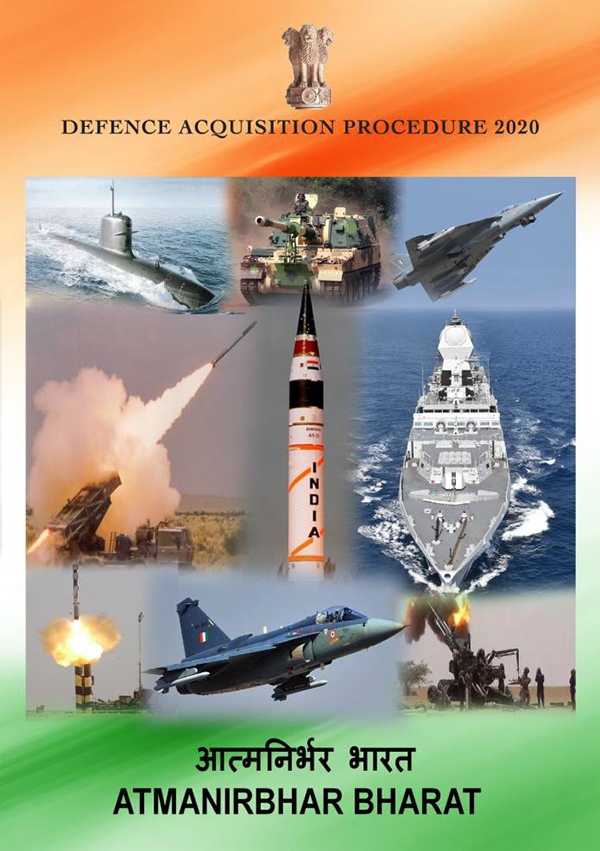The term “public procurement” refers to the procurement of goods, services, and execution of works by the government departments and organisations functioning under their administrative control. There is no specific law governing public procurement in India. A Public Procurement Bill was introduced in the Lok Sabha in May 2012 and referred to the Standing Committee on Finance the same month.1 But no report was submitted by the committee and the bill lapsed in 2014 with the dissolution of the 15th Lok Sabha.
By Amit Cowshish
The 2012 Bill envisaged an overarching framework to regulate the procurement of goods and services costing over Rs 50 lakh by the central ministries, departments, public sector enterprises, and autonomous and statutory bodies. Its objective was to ensure transparency, accountability and probity in the procurement process, fair and equitable treatment of bidders, and promotion of competition, efficiency, economy, integrity, and public confidence in the public procurement process.
The issue resurfaced three years later when, presenting the Union Budget for the Financial Year 2015–16, then Finance Minister Arun Jaitley told the parliament that “Malfeasance in public procurement can perhaps be contained by having a procurement law and an institutional structure consistent with the UNCITRAL model”. He added that the parliament needed “to take a view soon on whether we need a procurement law, and if so, what shape it should take”. Some reports indicate that the Public Procurement Bill, 2015 was subsequently drawn up, but it is unclear whether this bill was introduced in the parliament. In any case, this law never got enacted.
In the absence of any specific law, public procurement and other related financial matters are governed by the General Financial Rules, 2017 (GFR 2017) promulgated by the Ministry of Finance (MoF). These rules are applicable to all central ministries and their attached and subordinate bodies. These are also deemed to be applicable to the autonomous bodies which do not have their own government-approved financial rules.
It is noteworthy that the GFR 2017 is not applicable to the Central Public Sector Enterprises, including the Defence Public Sector Undertakings (DPSUs), which generally follow their own individual rules and procedures, approved by their respective Board of Directors. However, all these are largely inspired by, and conform to, the public procurement principles laid down in the GFR 2017.
The GFR 2017 allows ministries and departments, other than the MoF, also to issue instructions on specific aspects of the public procurement policy. For example, the Public Procurement (Preference to Make in India) Order, 2017 was issued by the erstwhile DIPP (now renamed Department for Promotion of Industry and Internal Trade, or DPIIT) under Rule 153 (iii). This Order requires preference to be given to the local companies in the matter of public procurement.
Rule 15 of the 2017 Order directs the administrative ministries to issue instructions to the government companies and other procuring entities under their control which are not governed by the GFR 2017 to comply with the said Order. Accordingly, the Department of Defence Production (DDP) has issued several instructions to give effect to the policy and procedure envisaged in the 2017 Order. These instructions are applicable to all procuring entities under the administrative control of the Ministry of Defence (MoD), including the DPSUs and Ordnance Factory Board (OFB).
As alluded to earlier, the GFR 2017 does not deal exclusively with public procurement. At best only three chapters—3-page Chapter 5 on Works, 17-page Chapter 6 on Procurement of Goods and Services, and 4-page Chapter 8 on Contract Management—can be said to be directly related to procurement. Of these three, Chapter 6 is the most important from the viewpoint of public procurement.
However, the policy and procedure of public procurement set out in Chapter 6, or other chapters, of the GFR 2017 are too general to be of much practical use, especially for managing complex procurements. To overcome this limitation, the procuring departments are permitted by Rule 142 to issue detailed instructions broadly in conformity with the general rules contained in Chapter 6. Under this enabling rule, the MoF has issued three manuals for the guidance of the procuring departments other than those which have issued their own instructions. These manuals are followed by the ministries and departments which do not make large scale, or complex, procurements. Since the GFR 2017 and MoF manuals do not address the complexities of defence procurement, the MoD has promulgated separate manuals under the aforesaid enabling clause in the GFR 2017, though this is not specifically mentioned in all the MoD manuals.
The main, currently applicable, MoD manuals are: (a) the Defence Acquisition Procedure 2020 (DAP 2020) for procurement of capital goods and services, (b) Defence Procurement Manual 2009 (DPM 2009) for revenue procurement, and (c) Defence Works Procedure 2020 (DWP 2020). The first two govern capital and revenue procurement for the armed forces and the Indian Coast Guard, while the DWP 2020 applies to the execution of civil works by the Military Engineer Services.
The OFB, Defence Research and Development Organisation (DRDO), Border Roads Organisation (BRO), and all the nine DPSUs have their own procurement manuals. Besides these manuals, there are some isolated instructions that regulate miscellaneous expenditure, as on acquisition of land.
A question often asked is whether instructions issued by the Central Vigilance Commission (CVC) are applicable in addition to, and supersede, the instructions contained in the above-mentioned manuals. It is difficult to answer this question in yes or no. The ministries and departments are supposed to incorporate all the relevant CVC instructions in their manuals, by customising them, if necessary, to suit their requirement. Therefore, the personnel responsible for procurement need not worry about the CVC instructions issued prior to the promulgation of a particular manual. However, this too is not categorically mentioned in all the manuals.
As for the instructions issued by the CVC after the promulgation of a manual, the position is worrisome. To illustrate, Para 2 (b) of the DAP 2020 provides that in the “event of enactment of new legislation or change or amendment or enforcement of any Act or Law or Policy, rules or regulations or guidelines of MoD or Government of India or body such as Chief Vigilance Commission (CVC), which becomes effective after the date of last amendment to this DAP, the same will automatically be deemed as replacement to the one referred to in this DAP”.
This is unfair. The MoD must assume the responsibility of amending the relevant provisions of the manuals which are affected by any instructions issued by the CVC after their promulgation. The procurement personnel cannot be expected to check at every stage if CVC has issued any instruction which has a bearing on the activity they may be carrying out at the given point of time. Moreover, many times, the CVC instructions need to be customised before these can be implemented.
Be that as it may, within the framework of the fundamental principles and rules of public procurement set out in the GFR 2017, the individual ministries, including the MoD, enjoy full freedom to evolve the procedures that address the needs and complexities of procurement carried out by them, as in the case of defence procurement. The question is whether those principles and rules are anachronistic and come in the way of the MoD evolving a more efficient procurement procedure that meets the armed forces’ aspirations.
It would be wrong to aver, as many do, that the fundamental architecture of public procurement itself is flawed. It may sound overly simplistic, but the procurement principles and rules are based on common sense and can be reduced to a few axioms. The problem is that these axioms are not very systematically and clearly enumerated in the GFR 2017. Enactment of the long overdue statute on public procurement can help remove the ambiguities about these axioms and draw the boundaries more clearly within which individual departments could evolve bespoke procedures.
This article first appeared in www.idsa.in and it belongs to them.








